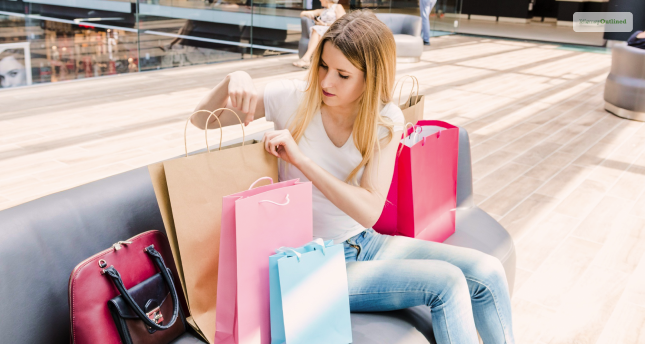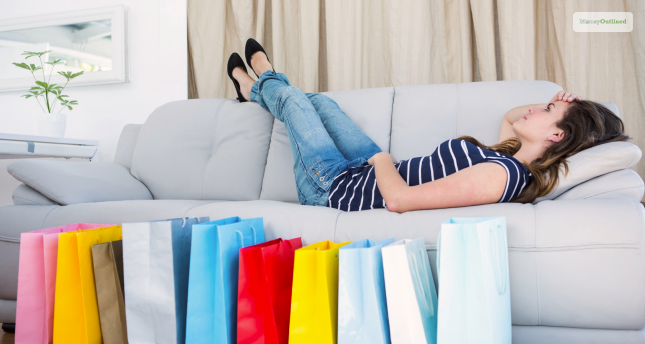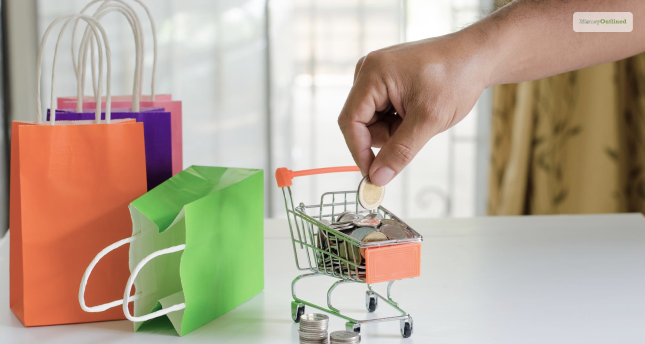Table Of Contents
- What Is Impulsive Buying?
- Why Does Impulse Buying Happen?
- Impulse Buying: Factors That Influence Customer Buying Behavior
- 1. Emotional Response
- 2. Instantaneous Gratification
- 3. Social Stimulus
- 4. Utilitarian Drives
- 5. Belief Of Getting A Deal
- 6. Personalization Effect
- 7. Anchoring Effects
- 8. Cognitive Bias
- 9. Environment
- How Marketers Cash In On Impulse Buying?
- 1. Upselling
- 2. Cross-Selling
- 3. Product Placement Optimization
- 4. Increasing Sales By Training Employees
- Wrapping Up
- What Is Impulsive Buying?
- Why Does Impulse Buying Happen?
- Impulse Buying: Factors That Influence Customer Buying Behavior
- 1. Emotional Response
- 2. Instantaneous Gratification
- 3. Social Stimulus
- 4. Utilitarian Drives
- 5. Belief Of Getting A Deal
- 6. Personalization Effect
- 7. Anchoring Effects
- 8. Cognitive Bias
- 9. Environment
- How Marketers Cash In On Impulse Buying?
- 1. Upselling
- 2. Cross-Selling
- 3. Product Placement Optimization
- 4. Increasing Sales By Training Employees
- Wrapping Up
Impulse Buying: What Are The Major Factors That Influence Customer Buying Behavior?
When it comes to impulse buying, there are many factors that influence customer buying behavior. In this article, you will learn about those factors that lead to impulsive buying in consumers. This depends a lot on the buying behavior of consumers in general. Here, we will also take a look at them as well.
Some of the major factors include emotional response, discounts and offers, store environment, past experiences, product features, etc. While some of them are based directly on impulse, others are planned too. Apart from that, some impulsive purchases are reminders to consumers that they must buy it.
However, before learning the factors in general, we will take a look at some of the general aspects of impulse buying. Hence, to learn more, read on through to the end of the article.
What Is Impulsive Buying?

Impulse buying is a psychological phenomenon where a consumer makes a sudden and unplanned purchase. Here, the consumer bought a product that is not fully needed at the moment. However, such a purchase can lead to financial stress if it is not part of the budget of the individual.
The product that the consumer bought due to impulsive behavior can be as small as a candy or as big as a car. The behavior depends a lot on the emotional situation of the individual.
Such an impulsive behavior happens due to a sudden temporary excitement. As per many surveys, the average impulse spending increased by 72% in the United States. Due to the impact of the pandemic, people started to buy many items in bulk that they actually did not need.
According to a research article on Frontiers.org,
?Psychological factors have a strong implication in the purchase decision, as we easily find people who, after having purchased a product/ service, wonder about the reason why they did it. It is essential to understand the mental triggers behind the purchase decision process, which is why consumer psychology is related to marketing strategies.?
On the other hand, impulsive buying from consumers also helps in driving sales of companies. Also, this type of impulse buying helps promote the company’s overall brand image. Moreover, this behavior from consumers also helps in causing a rise in sales returns for the company. Furthermore, companies can also deduce the needs and expectations of consumers better due to impulsive purchases.
Why Does Impulse Buying Happen?
Impulsive purchases happen as a psychological response of customers toward their shopping tendencies. Here, consumers tend to buy things that they actually do not want or need at the moment.
However, the response comes due to the fact that eCommerce sites or retail stores provide huge discounts on various items. Hence, consumers feel tempted to buy them. Apart from that, such behavior also occurs on the verge of crises, like it happened during the early stages of the COVID-19 pandemic. In this case, people were buying many items in bulk that they actually did not need.
Some of the other reasons that influence impulsive buying are emotional stability, past experiences, store environment, and many more. However, one can avoid impulsive buying by planning a budget or even waiting for a few hours before buying.
Impulse buying happens due to the emotional drive of consumers toward products. Furthermore, the age of consumerism makes it increasingly difficult for consumers to resist buying something they do not actually want. No matter what your intentions are, you cannot stop yourself from buying something that you actually do not need.
NerdWallet adds ?
?Impulsive buying theory is an emotionally driven behavior of customers towards products. Some variables here include self-control and emotions. Irresistible urges can always break a person?s self-control towards buying. Discounts and offers play a major role in stimulating these urges. For example, the Black Friday sale in 2022 recorded a shopping by 196.7 million customers due to impulsive shopping.?
This happens because people?s brains are wired in such a way that they make quick and irrational decisions when it comes to shopping. Other factors that lead to such decisions include offers and discounts from companies, boredom, emotional state, etc.
Impulse Buying: Factors That Influence Customer Buying Behavior

The following are the major factors that influence impulse buying among consumers:
1. Emotional Response
When you are in a situation of immense levels of stress and exhaustion, it can be hard for you to keep a clear mind. This stress can occur due to tiredness or an all-nighter. Basically, during a stressful situation, stress, fatigue, and anxiety, there is a strain on the analytical prefrontal cortex of the brain. This part of the brain is responsible for rational thinking and sound decision-making. Due to this stress, people start acting irrationally.
As a result, these consumers start making decisions based on their emotional state. These emotions command the limbs through the brain. As a result, people make purchases that make them happy or provide emotional value.
2. Instantaneous Gratification
Everyone likes to have new things. Hence, shopping provides quick gratification during times of stress and anxiety. This happens due to a sudden flow of dopamine. Hence, as people indulge in consumerism, it offers an instant burst of gratification. However, this gratification is short-lived.
Although some purchases give consumers some level of joy, there are some purchases that offer repeated and pleasurable experiences every time. These might include a book or a vehicle. However, in most cases, the gratification is short-lived. This is especially true for impulsive buyers as they hardly use the things they buy and leave them untouched.
3. Social Stimulus
You might think that your shopping choices are your own. However, research suggests that social stimulus and peer pressure play a major role in driving impulsive behavior in consumers. Even the mere presence of a shopping partner can increase the likelihood of buying unplanned items. This, however, also strengthens the bond between the shopping partners.
In fact, as per findings, family members (especially parents and children) have a substantial impact in driving impulsive purchases. Apart from that, gender also plays a big role in influencing shopping behavior. Here, women are more influenced by children and close friends, while men are more influenced by parents and colleagues.
4. Utilitarian Drives
Consider those instances when you make a sudden decision to buy something that is practical as well as functional. Examples of these types of items can be batteries, toilet paper, tissues, etc. However, these purchases are unplanned. This type of purchase is the result of utilitarian motivation.
As compared to other types of emotional triggers, a utilitarian drive is more emotionally neutral and does not include positive or negative emotions. For example, some of the most common impulsive purchases during the pandemic include hand sanitizers, toilet paper, and cleaning supplies. This reflects the focus of consumers on functionality and practicality.
5. Belief Of Getting A Deal
Just because a consumer is making impulsive purchases does not mean that he is spending a lot on luxurious products. Sometimes, people make impulsive purchases while having a belief that they are saving money in the long run.
As per a recent survey, almost half of consumers responded that they would like to purchase only those products that come with discounts. In fact, sales promotions from companies have a great impact on the buying behavior of consumers. This holds especially true for those consumers who are conscious of price. They are also more likely to choose those products that save them more money.
6. Personalization Effect
Companies use the personalization factor to drive sales. Here, they offer tailored experiences to their target consumers as well as return consumers. As a result, such offerings from companies have become. Here, consumers feel that a product is specifically made for them. Hence, it creates an emotional attachment.
This emotional attachment leads to a spontaneous buying decision. This works especially in those situations where the consumer feels that a particular product is tailored to his/her unique needs and preferences.
7. Anchoring Effects
The anchoring effect is the tendency of people to rely too much on the first piece of information that they come across while they are on the verge of making a purchase decision. As a result, this leads to impulsive purchasing decisions when consumers see an initial price or an offer that looks attractive, even though the purchase does not reflect a good deal. However, this type of impulsive purchase is not very common.
8. Cognitive Bias
Cognitive biases are existing biases or shortcuts that your brain takes to make more sense of the world around you. This helps you reach your purchasing decision faster. However, this also leads to impulse buying among consumers.
Shoppers who have confirmation bias try to look for information that confirms their bias regarding a purchase of a product. For example, a study shows that many consumers read many reviews online before they make a purchase.
9. Environment
This is one of the biggest factors that leads to impulsive purchasing decisions. Also, it is one of the major factors that influence consumer buying behavior. When consumers are in a certain shopping environment, they make more impulse purchases. For example, consumers make more impulsive decisions when they see tempting offers, appealing displays, or bright colors.
Apart from the environment and ambiance, the characteristics of the product also play a big role in the mind of the consumer. In addition to that, some consumers also impulsively buy out of loyalty towards a particular brand. These factors play a significant role in the consumer?s buying experience.
How Marketers Cash In On Impulse Buying?

There are a variety of techniques that marketers use to make the most of consumers? impulsive buying behavior. Here, Business News Daily adds ?
?Even at a time when many shoppers are looking to save money, they?re still making impulse purchases. The main beneficiaries may be stores that can take advantage of these impulsive purchase habits.?
The following are some of the major techniques marketers use to cash in on impulse buying:
1. Upselling
With upselling, companies encourage their customers to buy a product of higher quality. In most cases, this product is a more expensive version of the one that the customer is intending to buy. For example, if a consumer is trying to buy a wooden chair, the company might show a chair that is built from a sturdier wood or one that is more expensive.
2. Cross-Selling
With the use of cross-selling techniques, companies encourage customers to buy a product that complements the one that they are already purchasing. By this approach, the company logically promotes a product to the customer that improves the latter?s experience with the product. For example, a company might show some chairs to a person who is looking to buy a table.
3. Product Placement Optimization
Product placement is one of the biggest marketing techniques, where companies display products to consumers for purchase. One of the ways companies incentivize impulse purchases is through block placement. Here, companies group related products together. As a result, consumers find the items that they are looking for.
Apart from that, companies also use vertical placement, where they arrange items vertically on display, where the most popular item is on the front. They also place those products at locations where they want buyers to purchase. Hence, this leads to impulsive buying behaviors among consumers.
4. Increasing Sales By Training Employees
Retail stores train their employees in such a way that they make personalized product suggestions to customers. This results in impulse buying, which helps increase sales. On the other hand, salespersons also help customers find products that they are looking for. Even if a customer intends to buy only a single item, salespersons influence the customer to make related purchases.
Wrapping Up
Hope this article was helpful for you in getting a better understanding of the major factors that influence customer buying behavior when it comes to impulse buying. If you want to limit impulse buying, you will need to create a budget and stick your expenses to it. Do you have further suggestions to make regarding how to stop impulse buying? Consider sharing them with us in the comments section below.
Continue Reading:











Leave A Comment